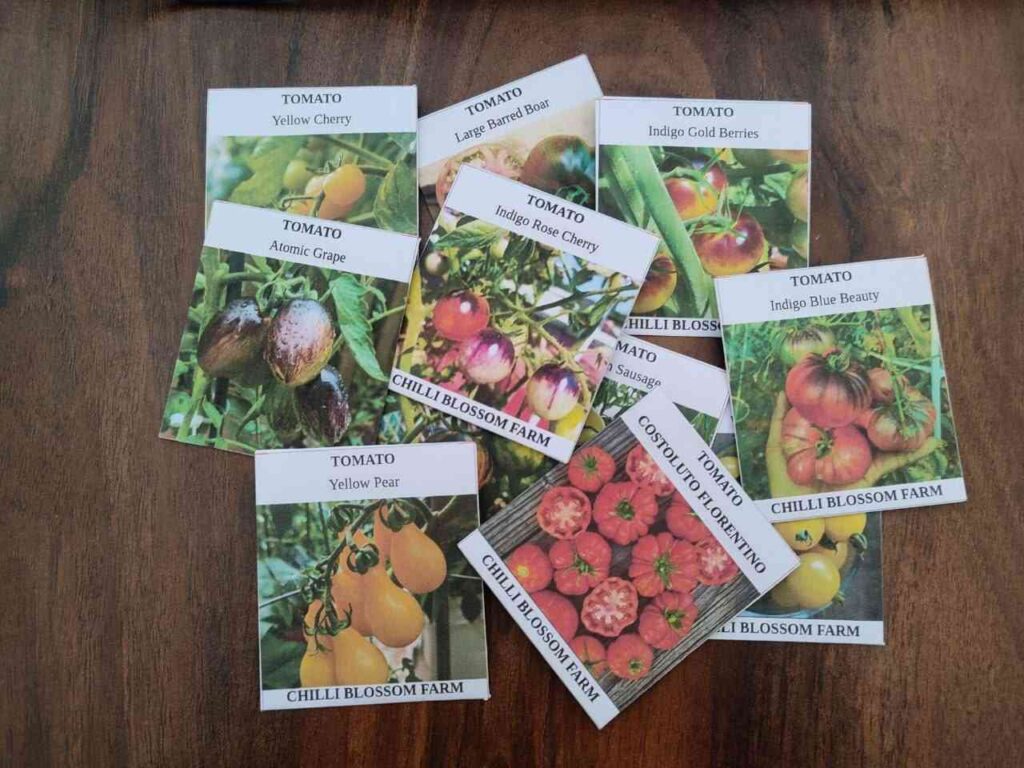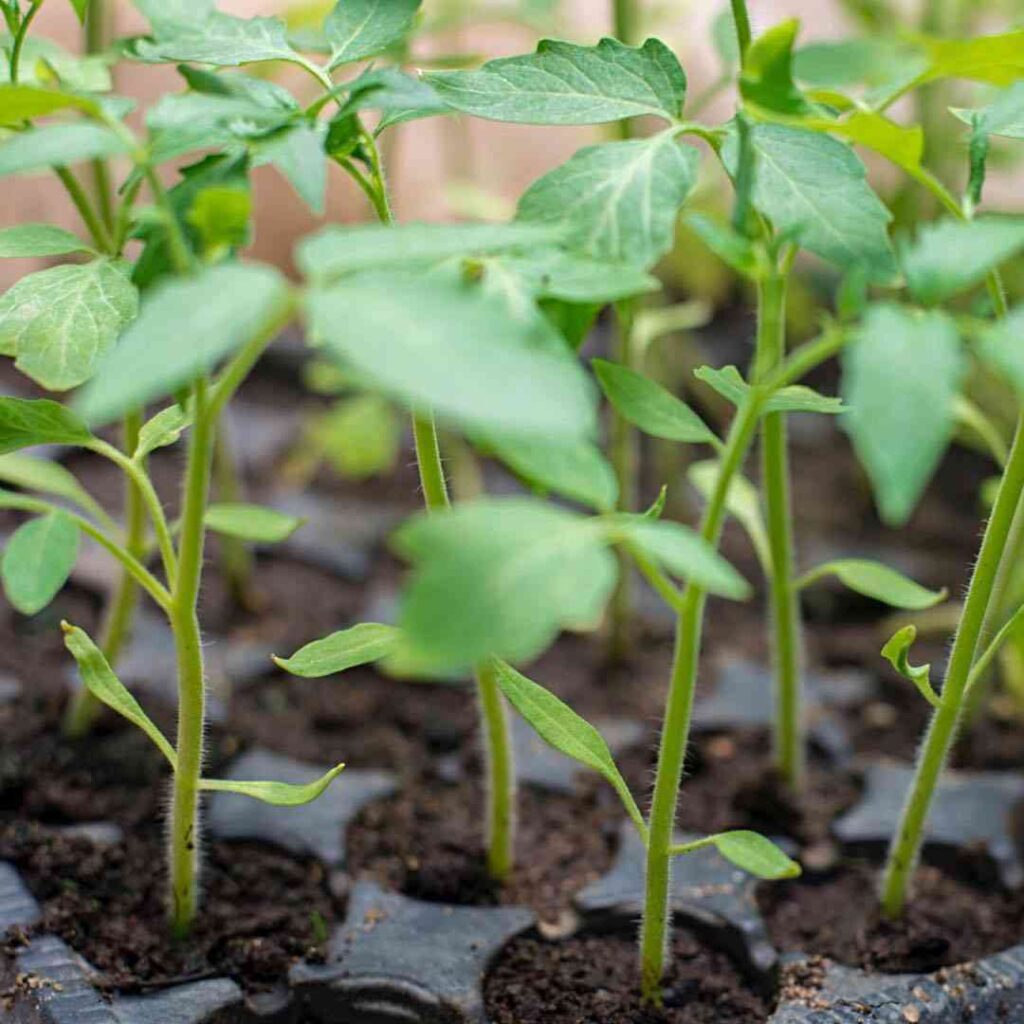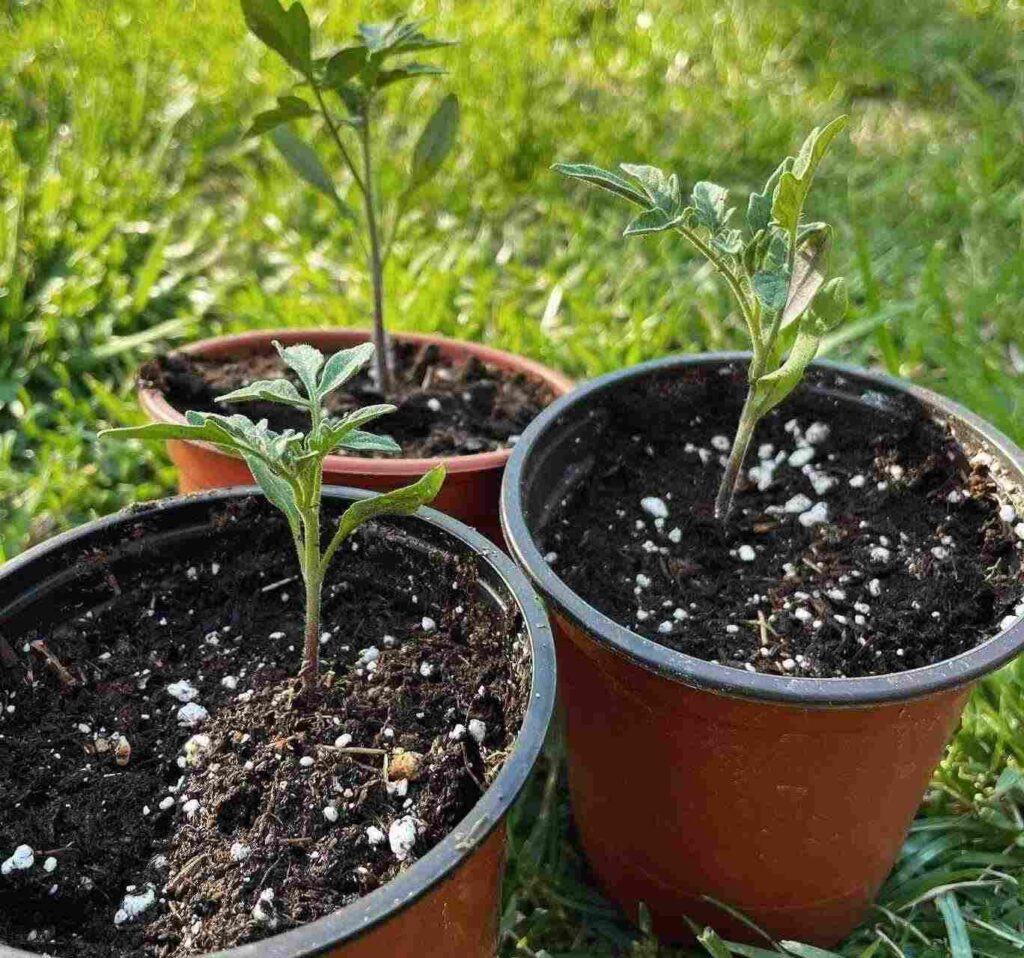
The sweet, juicy flavors and lively textures of garden-fresh tomatoes simply cannot be rivaled by their store-bought counterparts. If you’ve never tasted garden-fresh tomatoes, you are in for a pleasant surprise!
Growing tomatoes can be a fulfilling and enjoyable experience, regardless of whether you have a spacious backyard or a cozy balcony.
All that’s required is a modest degree of knowledge and a bit of patience. Fear not, for we are here to show you the way!
This post will take you through tomato growing basics, from planting seeds to harvesting your own bounty of juicy tomatoes. So, get ready for a delightful adventure into the realm of tomato cultivation, as we guide you every step of the way!
Consider growing your tomatoes from seeds instead of buying seedlings from a nursery. This allows you to experiment with a wider range of tomato varieties that may not be available as seedlings. Plus, growing tomatoes from seeds is a fun and fulfilling experience that allows you to connect with the plants you’re growing on a deeper level.

When it comes to choosing tomato seeds to grow, there are a few things to consider. The first thing to think about is what type of tomato fruit shape you like.
There are five options: cherry, plum, pear, standard, and beefsteak. Each shape has its own unique qualities, so it’s a good idea to do some research to find the one that best suits your needs.
The next thing to consider is the plant growth type. Tomatoes come in two categories: determinate and indeterminate.
Determinate tomatoes grow to a set height and produce all their fruit at once. Indeterminate tomatoes, on the other hand, keep growing and producing fruit throughout the season.
To get started, all you need are some tomato seeds, a warm and bright place to grow them, and a container to hold the soil. You can use almost anything as a container – even an old egg carton or plastic cup!

Just make sure that your tray/container has drainage holes, so your tomato roots don’t get too wet as overly wet roots can lead to diseases like damping off.
To plant your tomato seeds, simply place two or three seeds into each small container or cell of a seed starter. Cover them with a little bit of soil and water gently to help them grow. It’s important not to make the soil too wet, or your tomatoes could get sick.

Giving them a spritz of water twice a day. Within a week, you should see sprouts emerging from the seeds, and under warm and bright conditions, they’ll grow vigorously into seedlings.
Seedlings require proper care to develop into healthy plants. The seedlings need plenty of light to grow, so it’s important to place them in a location with ample sunlight or use a grow light.

Watering the seedlings is crucial as well. You must keep the soil moist, but not too wet, as overly wet soil can cause the seedlings to rot. You can water the seedlings from the bottom by placing the tray in a shallow dish of water, allowing the soil to absorb the moisture.
Maintaining the right temperature is also vital for the seedlings’ growth. Tomato seedlings prefer warm temperatures between 65-80°F (18-27°C) and need to be protected from cold temperatures and drafts.
When the seedlings have their first true leaves, you can start fertilizing them with a diluted fertilizer solution. Remember to avoid over-fertilizing as it can harm the seedlings’ growth.

Once your tomato seedlings have developed four leaves, it’s time to transfer them to deeper pots from the tray. It’s important to use a light potting mixture to provide good drainage for the seedlings.
When transferring the seedlings, be sure to work with care so as not to disturb the roots or bruise the young plants.
Gently remove the seedlings from the tray, taking care not to damage their delicate roots. Once you’ve transplanted them into deeper pots, continue to care for the seedlings by keeping the soil moist and providing ample light.
As the seedlings continue to grow, you’ll need to transfer them to even larger containers or transplant them outdoors.

If you want to grow your tomatoes in containers, you can repot them into a larger pot as they grow. Here’s how to do it:

If you want to plant your tomatoes outdoors, there are a few things to keep in mind:
To keep your tomato plants healthy, it’s important to water them regularly, but be careful not to overwater them, which can lead to root rot.
Fertilizing your plants every few weeks with a balanced fertilizer is also important to provide them with the necessary nutrients for growth and fruit development.
Make sure to monitor your plants for any signs of pests or diseases, such as yellowing leaves or spots, and take action immediately if you notice any issues.
Pruning your plants by removing any suckers that develop between the main stem and branches can help focus the plant’s energy on fruit production, and providing support for your plants by staking them or using tomato cages can prevent them from sprawling on the ground.
To harvest your tomatoes, wait until the fruit is fully ripe before picking it. Ripe tomatoes should be firm but slightly soft to the touch and have a deep, rich colour.

Use a sharp knife or garden shear to cut the fruit from the stem, taking care not to damage the plant. Regularly harvesting your tomatoes can encourage continued fruit production, but be sure to not leave them on the plant for too long, as they can become overripe and fall off.
When storing your tomatoes, keep them at room temperature and away from direct sunlight. Avoid storing them in the refrigerator, as this can cause them to lose flavour and texture.
In conclusion, growing tomatoes is such a delightful and rewarding experience that anyone can enjoy. If you’ve never tasted garden-fresh tomatoes, you’re in for a real treat! Nothing compares to a freshly picked tomato’s sweet, juicy flavours and vibrant colours.
And the best part? It’s easy to grow your own tomatoes at home, whether you have a big backyard or a small balcony.
With so many incredible varieties of tomato seeds available on our website, you’re sure to find the perfect one for your garden. So, why not give it a try? Start your own tomato garden today and enjoy the taste of summer all year round. Happy growing!